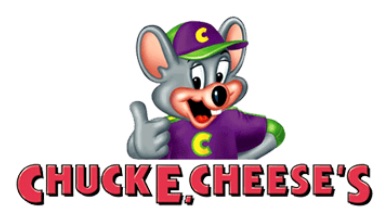Silo has been a literal and figurative four letter word in corporate America for a very long time. The obvious (and often hard to solve) problem the silo creates is distribution of incentives so that people in one group/silo do whatever they need to do to achieve their performance goals, and ignore anything else. So when an opportunity spans multiple siloes, the odds of success in capitalizing on that opportunity plummet. When people talk about the organizational silo as a problem – that’s often the problem they face.
There is another silo issue that is much less obvious, but every bit as problematic for an organization. The words people use to describe their work tend to silo as well. People in one silo may use the same word for a very different thing, where others may use different words for the same thing. It might start percolating a “so what?” from you – but it’s a big deal. And I am going to give you three examples of just how costly this language barrier can be.
But before I do that – before I get to the heart of the importance of clear and consistent communication, a bit of levity, here’s a clip where none other than Jerry Seinfeld explains how strange it is when we use words to describe things – but the words we use are actually the opposite of what we are describing: https://www.youtube.com/watch?v=EbHaQYDo7Zs.
OK – on to the examples.
- Starbucks. When we were just starting out with Aimee and Janet on what was then called XOP, Express Order & Pay, the word was that executives wouldn’t approve of it. What my colleague Tony figured out that day – the first day we were there, something Starbucks was blind to, was that the ten executives (and it was ten) who had a vote on whether to move the project forward, was using the same expression “mobile order” but it meant ten different things. One had a very specific compliance concern that fit in their definition, another made assumptions about where the customer was relative to the café when placing their order – which turned out to be an unimportant assumption, and a third was aware of a data issue in their existing systems that would make the project too complex (this one turned out to be crucial – but we solved it). At the heart of this was that each executive was operating in their own silo with their own incentives and assumptions in mind and it was difficult for them to look more broadly. They were using the same words and arguing, without realizing they were arguing about ten at least slightly different use cases. Once Tony pointed this out, and got the ten executives to agree on a single definition, with no hidden or false assumptions, it was immediately approved, and all of the reasons they “couldn’t” do mobile orders went away, or were deemed solvable.
- CH Robinson. This is a large logistics company in Minnesota with five different lines of business for transportation – vessels, full truck loads, partial truck loads, and so on. We were asked to see if there was any opportunity to consolidate technology solutions across the five different lines of business, which operate very much as standalone business units – siloes. At the beginning of the discussion, the executives in charge of the groups said that each group was unique – that they all did such specialized tasks that it was very unlikely to consolidate anything. We then went step-by-step to decompose all of the business capabilities that made up the transportation journey for each division. At first glance, it looked like the executives might be right, because nearly all of the words on these different journey for each group was different. Then, step by step, we asked the difference between the words, and it turned out that in many cases they had simply been using different words for the exact same thing. In the end, we found that there was, at most, only about 10% difference in the capabilities of any one of the business units, revealing the opportunity for massive consolidation. So this one was essentially the opposite of the Starbucks case.
- Avalara/Zappos. Avalara is a Seattle area company specializing in tax software. As you might expect, the word “price” comes up often in discussions at Avalara when they are talking taxes. But in truth there are at least six specific kinds of price at Avalara – list price, discounted price, and on and on. The problem at Avalara is that because there are teams of people focused on specific areas – they are able, within their own team, just say “price” and have it always mean “discounted price” – because that’s the group they are in. The problem occurs when they talk with people in another team – another silo – about price, they still just say “price” and that opens the door to confusion and errors and sometimes those errors can cost a lot (the case of Zappos where the price of one specific line of shoe from a brand were supposed to be discounted, but because of this exact type of silo problem, the person applied the discount to every shoe from that brand and not only did it cost Zappos millions in lost revenue – it also created massive inventory shortages because people spotted the discounts and word spread).
It’s not always easy to take a step back and wonder about the context of your conversations – but there are things that can be done to standardize language across the silos to help avoid the pitfalls of miscommunication. Some of this is also cultural and that’s not always the easiest thing to change – but it can happen.
The “so what?” question may be coming back up – and the question is, if these language issues are so prevalent in silos of companies, and those language gaps can be the cause of all sorts of problems, how does that get solved?
In the case of Starbucks and CH Robinson, it took an outsider, a consultant to point it out. In the case of Avalara, an employee tried to solve it by reminding people to specify which of the six prices they were talking about – that by itself was not enough to change the behavior – they would continue to just say “price” – so this raises the question – how do you solve this? There isn’t a one-size-fits all solution to this, but starting with awareness of the problem and pointing out specific cases of where it cost the organization money, or an opportunity can be a good place to start.







